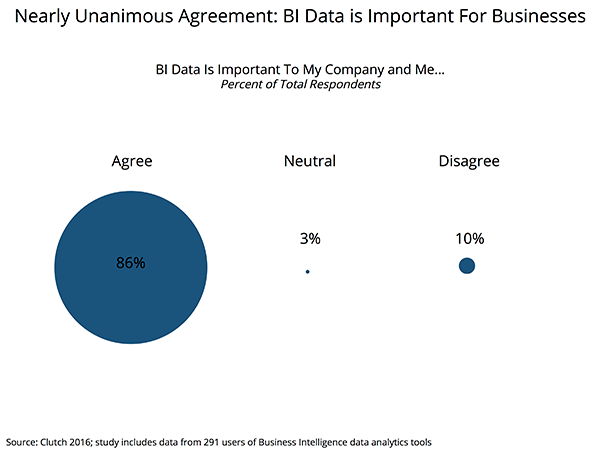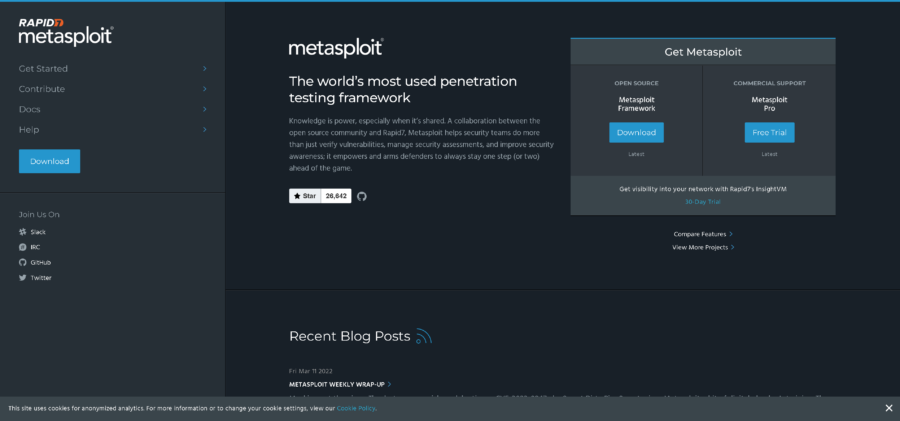Every few years, a new concept or technological development is introduced that drastically improves the business world as a whole.
In 1983, the first commercially handheld mobile phone debuted and provided workers with an unprecedented amount of availability, leading to more productivity and profits.
More recently, the Cloud has taken availability far beyond the simple act of voice-to-voice communication, allowing businesses to untether employees from their desks and give them virtually unlimited access to the software and storage space they need to do their jobs.
The use of business intelligence (BI) tools to turn raw data into useful information is the latest trend to sweep the business world. According to a recent survey, since 2012, 71% of businesses have started using BI data to address business needs.
This sudden popularity of BI data raises a few questions. Why are businesses so interested in BI? How can they use data analytics tools effectively? How do businesses across different industries use BI data?
There are three driving forces behind the recent uptick in BI data usage.
The need to “keep up with the Joneses” is not exclusive to suburbanites buying bigger TVs and newer cars just because their neighbors are doing so. Business executives also feel pressure to keep up with their competitors.
“There’s so much chatter about BI data. There’s a lot of pressure on corporate managers to be involved or at least have an answer when their senior management asks, ‘Where are we with that?’”
— John Keenan, Founder and CEO, Anthem Marketing Solutions
Even though business technology trends sometimes fall flat, lagging behind on the next big thing could mean missing out on a revenue generating opportunity.
The buzzword factor is important, but there’s much more to the rise of BI data. Businesses are beginning to recognize the array of benefits this type of data offers. In fact, 86% of data analytics users say BI data is important to their company.

(Image Source: Clutch.co)
BI data takes the guesswork out of making business decisions. It provides an unprecedented level of insight into how the average customer thinks and behaves.
Even though the benefits of BI data were apparent before wide-scale adoption in 2012, the tools needed to analyze the data were often costly, especially for smaller businesses. For example, advanced analytics solutions, require extensive training to operate effectively. But, with more self-service analytics tools entering the market, it has become more affordable for businesses to organize and make sense of the data they collect.
“As self-service functionality has evolved, the adoption rates for BI tools have been much higher. The reason is that IT has been stretched beyond belief. Demand has gone up for IT services, but budgets have gone down… There aren’t enough resources.”
— Carl Paluszkiewicz, Director of Customer Value, Denologix
Anyone can collect information, but not every business understands how to organize, analyze, and apply the data effectively. It is necessary to implement a clear strategy before investing in BI tools. For example, an advanced analytics tool is not a good fit for a small business seeking to visualize its performance metrics better.
“I got an RFP the other day from a customer doing basic data analysis on their desktop. They thought it would be good to implement a Hadoop Cluster. While they need a better system to manage their data, they don’t need to go from a very basic environment to a Big Data tool. It’s overkill.”
— Laura Squier, Director of Advanced Analytics and Business Development, QueBIT
How Businesses Across Industries Use BI Data
How are companies using their BI data to improve their business?
A restaurant chain uses promotions to attract and retain customers, and the restaurant wants to know whether using promotions is a successful strategy for increasing their revenue. They look at customer data, such as how much they spend in the restaurant and on what items. But, they do not know how their promotions influence food choice and spending. Analyzing internal data reveals gaps in their promotion strategy. They do not promote specific products on the menu or menu categories. They do not adjust menu options for different regions.
John Keenan of Anthem Marketing Solutions, gives some examples of other data points to consider:
A store that sells car parts uses BI data for demand planning and forecasting. This involves identifying which types of vehicles are most popular in each region. A store that sells car parts uses BI data for demand planning and forecasting. This involves identifying which types of vehicles are most popular in each region. Then, the retailer can select the parts to stock based on which cars local customers drive.
“Organizations can get tremendous value from having the right product in stock at the right time.”
— Laura Squier, QueBIT
We are drowning in data. There is more written content in a single issue of the New York Times than the average person from the 1800s would have read in a lifetime. And, every two days we create as much information as we did in all of human history up to 2003, according to Alphabet, Inc. Executive Chairman Eric Schmidt.
As analytics tools’ capabilities continue to advance, businesses will be able to apply the data they collect in new ways, resulting in increased efficiency and productivity.
By Sarah Patrick





